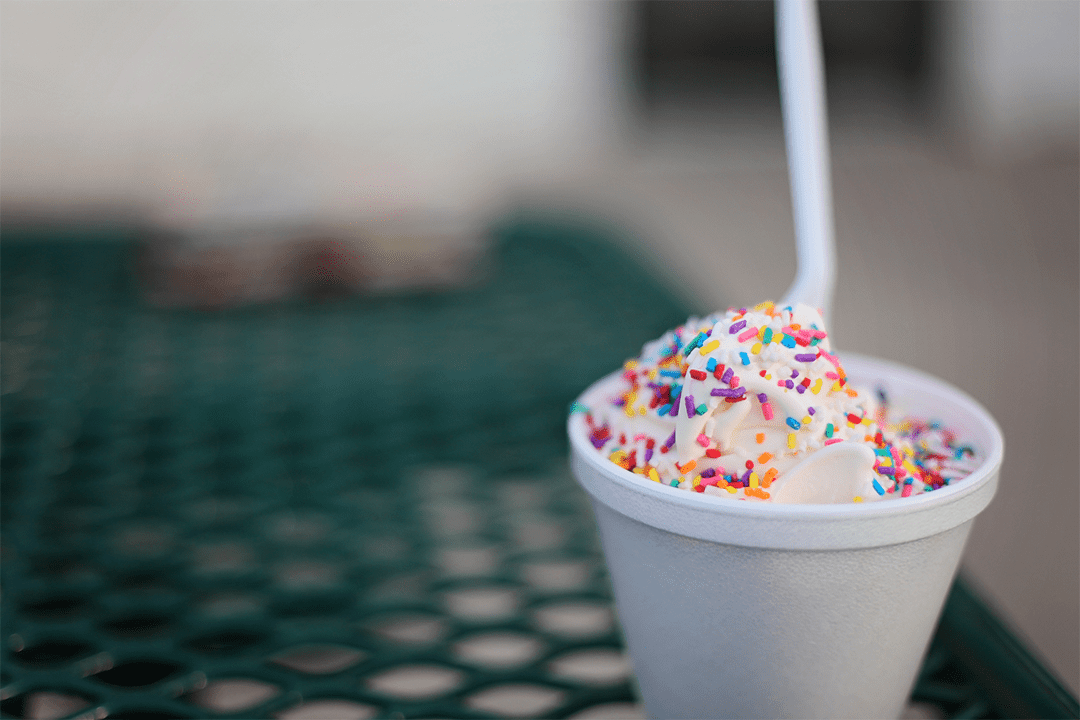It’s a terrible disappointment to open a pint of ice cream on a hot summer day, only to find that it has crystallized. Luckily, researchers might have just found the secret to maintaining the smooth and creamy consistency of our favourite frozen dessert: using cellulose nanocrystals (CNCs). If this newfound approach is proven to be successful, it may even apply to improving the preservation of donated organs and tissues.
The chemistry of ice cream
Ice cream starts with a liquid base. At freezing temperature, the water in the liquid base forms small ice crystals, which give the dessert its solidity. These ice crystals may melt due to changes in temperatures during storage or transportation. When the melted ice cream refreezes, the small melted ice crystals clump together into larger crystals. The size of these ice crystals must be minimal to achieve the indulgent creamy textures we desire, meaning that the formation of larger ice crystals leads to the tragic event of secret stashes of ice cream crystallizing in the back of your freezer.
Edible stabilizers — a kind of food additive — are widely used in ice cream manufacturing to hinder the growth of ice crystals, in hopes of maintaining ice cream’s smooth texture. Adding these stabilizers to the ice cream base forms a hydrocolloid, which is a system in which hydrophilic polymers bind to water molecules to restrict their movement. The sweet treat can thus achieve its thickness, as the additive absorbs and immobilizes the liquid component of ice cream, giving it a gel-like structure.
High profile solutions
One of the most common stabilizers — guar gum powder — has been used in processed food production for decades. There are concerns that consuming high doses of guar gum could lead to negative health effects. In the 1990s, a weight loss drug on the market contained a high dose of guar gum to simulate fullness in the stomach, which led to a wide range of health problems ranging from obstruction in the esophagus to death. Although the drug had a much higher guar gum content in comparison to today’s food products, we must be mindful of guar gum’s potential adverse effects.
An alternative to adding edible thickeners is to take advantage of naturally-synthesized antifreeze proteins (AFPs) from animals, like the freeze-tolerant wood frog. Numerous investigations have proven that AFPs can be useful, but the time-consuming and expensive processes of isolating them prevent their widespread commercial use. As such, it could be said that the search for other potentially useful antifreeze molecules continues.
A novel approach to resolve recrystallization
New materials built from cellulose, particularly CNCs, show promise in combating ice recrystallization. A recent study demonstrated that the effectiveness of CNCs depends on time and concentration. The study cited that ice crystals greater than 50 micrometres are likely to produce a gritty texture. The researchers found that 0.5 per cent and one per cent CNC solutions inhibit the growth of these undesired ice crystals within seven days. Based on their results, the researchers concluded that the surface area covered by CNCs blocks ice growth.
On the other hand, when compared to similar concentrations of CNCs, guar gum additives are much less efficient at slowing the growth of ice crystals, which continues up till seven days’ exposure.
In addition to their findings, the researchers suggest that the antifreeze property of CNCs may take longer to take effect in actual ice cream bases. This is because the diffusion of CNCs is predicted to be slower within the highly viscous and sugary ice cream base than in the solution used in the experiments.
The remarkable abilities of CNCs don’t just apply to ice cream — these findings could also pave the way to improve the future quality of other frozen foods. And food isn’t even the only application — the study of novel materials to reduce and remove unwanted growth of ice crystals can also be applied to enhance the storage time of live cells, tissues, and organs. Who wouldn’t love chemistry if it could preserve ice cream’s smooth consistency?


